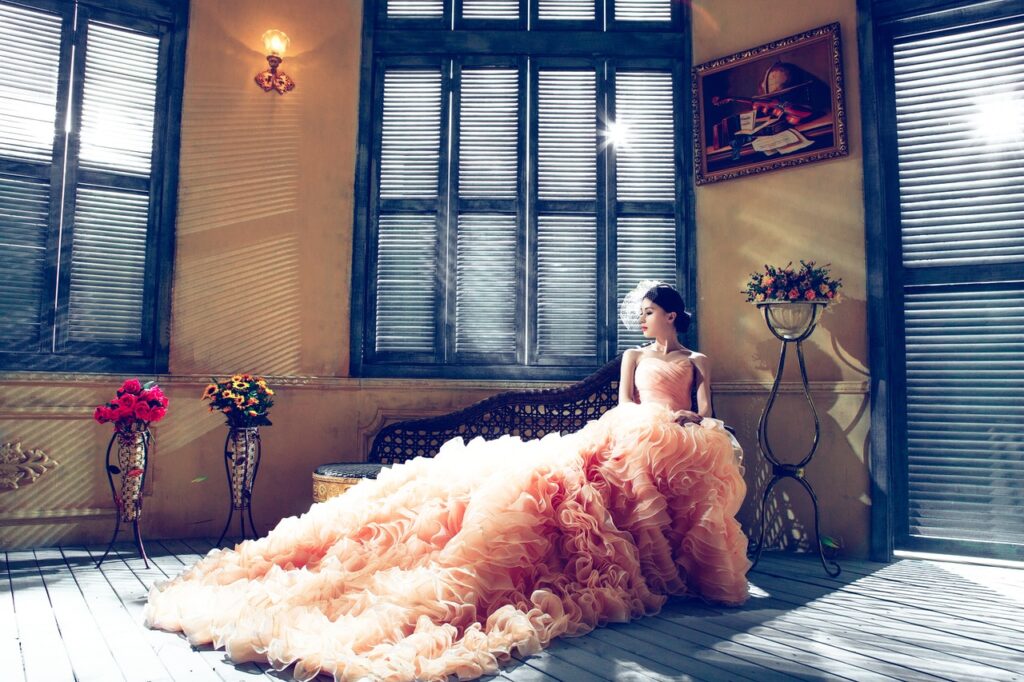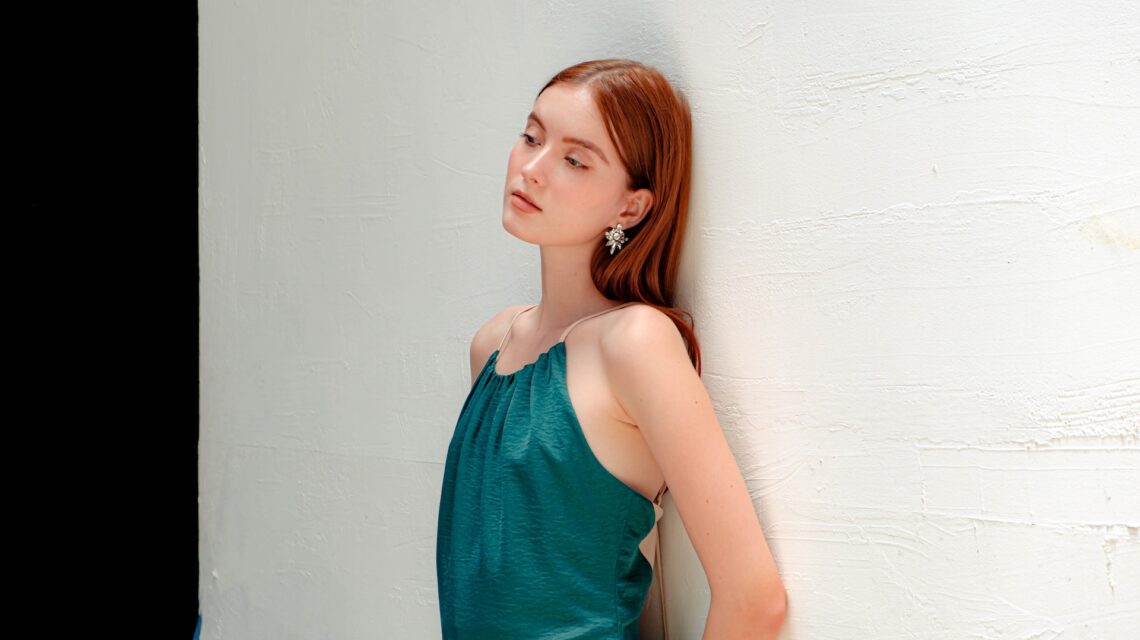Table of Contents
Introduction to Dress vs Gown Fashion
Fashion is a language, and within that, phonetics are the terms “Dress vs Gown”, which tend to stir heated debate among fashion lovers. While they may be seemingly interchangeable at some level, each item holds deep meaning in style, charm, focus, and even identity. Knowing the subtle differences between dresses and gowns warrants attention, whether you are styling for a laid-back outing or an extravagant event.
In this fashion segmentation of Dress vs Gown, we will look into their different periods of relevance, architectural features, reason for existence, and how to pick one for you accurately. So come along to unravel the glitz and glam hidden in these ageless pieces of clothing!
The Evolution of Dress vs Gown

It is noteworthy that for centuries, Dress vs Gown have changed as cultures have shifted over time. Combining fashion with history, in ancient times, clothing consisted of unfussy yet straightforward pieces; gowns and dresses served convertible purposes. Renaissance eras, however, witnessed more complex clothing featuring elaborate designs filled with eye-catching detailing. Clothes became more of a status symbol, as curl marks emerged as evening wear and gowns for the wealthier and privileged class.
More dramatic layers with corsets became a trend during the nineteenth century, and more layers were added to the bust and waist areas, marking the zig-zag uneven line period. Apparent differences in casual daytime wear and evening formal gowns emerged. Shape transitions and influences the modern era as designers blur boundaries; clothing now embraces versatility, enabling pieces to slide effortlessly from casual to formal. The ongoing transition, fuelled by inspiration from centuries past and future trends, showcases endless evolution in the concepts of dresses and gowns.
Differences in Design and Purpose
A dress is a single article of clothing with an upper section and a sewn skirt, as it can be worn formally and casually, unlike gowns, which are only formal attire. Unlike gowns, dresses do not require additional detailing touches to look fashionable. Accessories can be used to dress up a dress or wear it without any adornment. Gowns, however, are mostly paired with adornments.
A gown is exquisite and ostentious, making it an ideal attire for weddings, balls, and galas. Embellishments like beads and glitter are often added to the fabric, significantly increasing its beauty. However, dresses lack that level of sophistication, which makes them perfect for casual occasions such as brunches or park walks. Gowns, unlike dresses, can be made of luxurious fabric, which makes them more sophisticated. Knowing the differences between Dress vs Gown and their distinguishing features makes it easier to know which to wear for what occasion, whether a ball, a gala, or a simple stroll in the park.
When to Wear a Dress vs Gown
Dress vs Gown – The difference between a dress and a gown is a difference in the occasion. A chic dress works well for a casual outing, brunch, or a daytime event. For plush evening affairs, embroidered gowns done up in intricate stitches are the only option with unmatched elegance and class. In addition to that, new seasonality has a significant impact. In summer, festivities call for lighter dresses; in winter, coloured long-sleeved gowns become a staple. Despite fancy cuts, makeup devoid of bright colours always helps keep things glamorous and warm.
With glamorous venues like ballrooms, full-length, lofty gowns are ideal. For sophisticated tea parties in gardens, tea-length dresses look stunning. Depending on the embroidery depth, you can wow everyone at the next gala event you attend.
How to Choose the Right Dress vs Gown for Your Body Type
Every woman’s gown or dress has to be selected carefully, considering the body type. Check whether your shape is hourglass, pear, apple, or even rectangle. All the silhouettes can be enhanced with certain styles. Fitted dresses and gowns with defined waists beautifully accentuate hourglass figures. Pear shapes might opt for A-line designs that pleasingly ease out at the waist.
Straight dressers must select dresses with embellishments or ruffles to add more dimension. Empire waistlines give relief to and flatter apple shapes. V- The neckline should be paid close attention to as well. They are flattering and enhance the torso. Always look for what you know makes you confident. Styling is for improving the shape of who you are.
Styling Tips for Dress vs Gown
While styling a dress, consider its versatility. You can wear a sundress with sneakers for a laid-back look or dress it up with strappy heels and bold accessories for evenings out. A lightweight cardigan or denim jacket can also lift outfits through layering. As for gowns, achieve elegance. A classic gown should not require numerous accessories to shine. Stay with statement earrings and a matching clutch that goes with the dress’s fabric. For footwear, opt for elongated-looking sandals like strappy ones, which are best.
Consider hair and makeup as well. Soft waves exquisitely frame dresses, while sleek updos add sophistication to gowns. Last but certainly not least, remember the most critical point in both styles: confidence. Everyone has different styles, so follow your instincts for every choice and express yourself.
Iconic Dress vs Gown Moments in Fashion History
There have always been specific shifts in style that have defined the fascination of Dress vs Gown. Think of Audrey Hepburn in her show-stopping black gown from ‘Breakfast at Tiffany’s’. That archetypal look blended classicism with a hint of rebellion and is timeless. Diana’s wedding gown struck millions in awe and was another example. Understandably so, the voluminous structure paired with the lace detailing was and still is a prime example of royal glamour. Regarding the runway, couturists like Valentino never miss the chance to reinterpret elegance with breathtaking pieces. His red gowns are unforgettable, alive with romantic draping and bold colours infused with a passion for every occasion.
Beyoncé has also modernized the idea of a gown by strutting her couture pieces at award shows, proving time and time again how a gown can be femininely powerful. These reasons capture why the bows to gowns will forever be up for debate, for throughout time, they capture the admiration and inspiration of soldiers across the ages.
Conclusion: Embracing the Glamour of Both Dress vs Gown Fashion
The world of fashion is a diverse domain where Dress vs Gown styles are flaunted according to one’s personality. Delicately, a dress and a gown that is worn exquisitely have a place in your closet, and adding either, or preferably both, can drastically improve your wardrobe. Having the correct information alongside body type awareness guarantees anyone the ability to smile with pieces that effortlessly radiate to the eyes. Knowing the gaps between these garments enables you to make rational decisions for any set day or event.
The epitomes in fashion’s timeline evoke us with the essence of both styles through time. From red-carpet occasions to day-to-day tasks, there is creativity and resilience in dresses and gowns that never go out of style. Also, while stepping out in an extravagant gown or a cheerful Dress vs Gown, remember: each garment has its individuality as it shapes you. Adopting them both embraces the narrative, so rejoice for all they offer.
